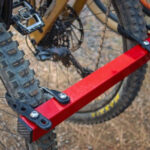Electric Motor Bikes have revolutionized personal transportation, offering an eco-friendly and efficient way to travel. At the heart of every electric bike lies its motor, the component that converts electrical energy into motion. While brushed motors were once common, the industry standard has shifted towards brushless DC motors (BLDC motors) due to their superior performance and reliability. This article delves into the workings of electric bike motors, focusing on why brushless motors are now the preferred choice.
The Rise of Brushless Motors in Electric Bikes
Brushless motors have become the dominant technology in electric bikes for several compelling reasons. Compared to their brushed counterparts, brushless motors operate more quietly, are significantly smaller and lighter for the same power output, and crucially, require no regular servicing. This lack of maintenance stems from the absence of brushes, which are prone to wear and tear in traditional motors. The enhanced efficiency and durability of brushless motors directly translate to a better riding experience and longer lifespan for electric bikes.
How Electric Bike Motors Generate Motion
The fundamental principle behind an electric bike motor is electromagnetism. Inside the motor, you’ll find thick copper coils. When electricity from the bike’s battery flows through these coils, it creates a magnetic field. This magnetic field interacts with permanent magnets within the motor, causing the rotor to spin. This rotational motion is then transferred to the wheels, propelling the electric bike forward. In many modern electric bikes, motors are ingeniously integrated directly into the wheel hub. This design, known as a hub motor, streamlines the power transmission, making the motor and wheel essentially one unit.
The Necessity of Gear Reduction
While it might seem straightforward to directly connect the motor to the wheel, the characteristics of electric motors, particularly their high torque output across a broad speed range, make direct coupling inefficient. Therefore, electric bike motors are almost always linked to the drive wheel through a fixed gear reduction ratio. This gear reduction is typically achieved using a combination of robust spur gears or helical gears. Gear reduction serves a vital purpose: it optimizes the motor’s torque for effective acceleration and hill climbing while allowing the motor to operate efficiently within its optimal speed range.
Furthermore, gear reduction plays a crucial role in enabling regenerative braking, a key feature in electric vehicles. Regenerative braking allows the motor to act as a generator when braking or coasting. During these phases, the motor converts kinetic energy back into electrical energy, which is then used to recharge the battery, enhancing efficiency and extending the bike’s range. This regenerative capability, often referred to as “dynamic braking,” is now considered an essential feature in electric bike design.
Understanding Motor Power and Electrical Load
In basic physics, power is defined as the rate at which energy is consumed. In the context of electrical engineering, particularly with motors, “load” relates to power but also specifies the operating voltage and frequency. For instance, you might see a heater rated at 1.2 kW at 250 Volts. This rating indicates that the heater will consume 1200 watts of power when supplied with 250 volts. If the voltage is lower, the power consumption will also be less than 1200 watts. Similarly, an electric bike motor is designed to deliver its full performance output when connected to a power source that matches its specified voltage and frequency. Understanding these electrical ratings is crucial for ensuring the motor operates correctly and efficiently within the electric bike’s system.
In conclusion, electric bike motors, especially brushless DC motors, are sophisticated components that blend electrical engineering and mechanical design to provide efficient and reliable propulsion. The shift to brushless technology, coupled with smart design features like hub motors and gear reduction, has significantly enhanced the performance and user-friendliness of electric motor bikes, making them an increasingly attractive option for sustainable transportation.

